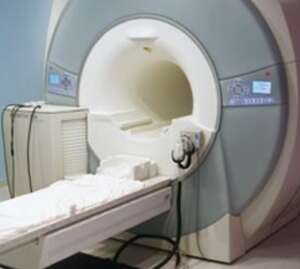The first half of my career was devoted to understanding the mechanisms of vision, memory, and executive function in the human brain. Then I shifted my research focus to a very different set of issues, which lie at the interface between cognitive neuroscience and “the real world.”
Here are brief descriptions of the two main research programs of my lab, on Neuroscience and Society and SES and the Brain. Selected writings follow each description. To see all publications you can use this Google Scholar link.
What is the study of ‘Neuroscience and Society’?
The study of neuroscience and society, sometimes called Neuroethics, emerged in the early 2000’s. This was a time of great progress in neuroscience, as a host of new methods were put to work understanding the cognitive, social and emotional processes of the healthy human brain (Poldrack & Farah, 2015, Nature). These advances brought with them the potential to explain, predict, and even control human behavior, raising a host of ethical, legal and social issues (Farah, 2002, Nature Neuroscience).
Here is an introduction to some of these issues, with an overview of our work and a selection of related papers from our lab.

Brain Enhancement
In contrast to the goal of clinical neuroscience, to treat brain disorders, the goal of “enhancement” is to improve the functioning of healthy, normal people. Both drugs and devices have been explored as possible brain enhancers and are already being used by some. Our research addresses the question of whether popular methods of brain enhancement do actually improve cognition (e.g., Ilieva NPP; tDCS, and the psychological, ethical and policy issues raised by enhancement (Farah, Science, 2015).

Uses and misuses of brain imaging
Neuroimaging offers spectacular new insights into the human brain. This family of methods has revolutionized basic science research on the human brain (Poldrak & Farah, 2015, Nature), and is now being applied to a variety of practical problems, with varying degrees of legitimacy and success. One goal of our work in this area has been to understand the state of the applied science and distinguish between legitimate and illegitimate uses of brain imaging. Another has been to understand the cultural and psychological factors that influence people’s expectations of neuroimaging (Farah & Hook, 2013, Perspectives in Psychological Science) and to distinguish between reasonable and unreasonable criticisms of imaging (Farah, 2014, Hastings Center Report).
We are also working on the perceived and actual role of neuroscience in education (Hook & Farah, 2013, Neuroethics; Farah, Hook & Lawson, 2014, Human Development), the ethics of invasive neurotechnologies (Attiah & Farah, 2014, Frontiers in Neuroscience; Farah, 2015, Neuron) and the policy implications of the neuroscience of socioeconomic status (Farah, 2018, Nature Reviews Neuroscience).
Why is this important?
To quote from the Mission Statement of our Center for Neuroscience & Society:
“Neuroscience is giving us increasingly powerful methods for understanding, predicting and manipulating behavior. Every sphere of life in which the human mind plays a central role – from education and family life to law and politics – will be touched by these advances, and some will be profoundly transformed.”
Selected publications on Neuroscience and Society
- Farah, M. J. (2021). Checking in with Neuroethics. Hastings Center Report, 51(1), 3-3.
- Ilieva, I. P., & Farah, M. J. (2019). Attention, motivation, and study habits in users of unprescribed ADHD medication. Journal of Attention Disorders, 23(2), 149–162.
- Mancuso, L., Ilieva, I.P., Hamilton, R.H. & Farah, M.J. (2016). Does transcranial direct current stimulation improve healthy working memory?: A meta-analytic review. Journal of Cognitive Neuroscience, 28(8), 1063-1089.
- Farah, M.J. (2015). An ethics toolbox for neurotechnology. Neuron, 86, 34-37.
- Farah, M. J. (2015). The unknowns of cognitive enhancement. Science, 350(6259), 379-380.
- Poldrack, R.A. & Farah, M.J. (2015). Progress and challenges in probing the human brain. Nature, 526(7573), 371-379.
- Attiah, M. A., & Farah, M. J. (2014). Minds, motherboards, and money: futurism and realism in the neuroethics of BCI technologies. Frontiers in systems neuroscience, 8.
- Farah, M.J. (2014). Brain images, babies, and bathwater: Critiquing critiques of functional neuroimaging. Hastings Center Report, 44, S19-S30.
- Farah, M.J., Hutchinson, J.B., Phelps, E.A. & Wagner, A.D. (2014). Functional MRI-based lie detection: scientific and societal challenges. Nature Reviews Neuroscience, 15,123–131.
- Farah, M.J. & Hook, C.J. (2013). The seductive allure of “seductive allure.” Perspectives in Psychological Science, 8, 88-90.
- Hook, C.J & Farah, M.J. (2013). Neuroscience for educators: What are they seeking and what are they finding? Neuroethics, 6, 331-341.
- Ilieva, I.P., Boland, J. & Farah, M.J. (2013). Objective and subjective cognitive enhancing effects of mixed amphetamine salts in healthy people. Neuropharmacology. 64, 496-505.
- Jones, O.D., Marois, R., Farah, M.J. & Greely, H.T. (2013). Law and Neuroscience. The Journal of Neuroscience, 33,17624-17630.
- Farah, M.J. (2012). Neuroethics: The Ethical, Legal and Societal Impact of Neuroscience. Annual Review of Psychology, 63, 571–591.
- Farah, M.J. & Gillihan, S.J. (2012). The puzzle of neuroimaging and psychiatric diagnosis: Technology and nosology in an evolving discipline. American Journal of Bioethics – Neuroscience, 3, 1-11.
- Smith, M.E. & Farah, M.J. (2011). Are prescription stimulants “smart pills”? The epidemiology and cognitive neuroscience of prescription stimulant use by normal healthy individuals. Psychological Bulletin, 137, 717-741.
- Farah, M.J., Editor (2010). Neuroethics: An Introduction with Readings. Cambridge: MIT Press.
- Farah, M.J., Smith, M.E., Gawuga, C., Lindsell, D. & Foster, D. (2009). Brain imaging and brain privacy: A realistic concern? Journal of Cognitive Neuroscience, 21, 119-127
- Farah, M.J. & Murphy, N. (2009). Neuroscience and the soul (letter). Science, 323, 1168.
- Greely, H.T., Sahakian, B., Harris, J., Kessler, R., Gazzaniga, M.S., Campbell, P. & Farah, M.J. (2008). Toward responsible use of cognitive enhancing drugs by the healthy. Nature, 456, 702-705.
- Farah, M.J. (2008). Neuroethics and the problem of other minds: Implications of neuroscience evidence for the moral status of brain-damaged patients and nonhuman animals. Neuroethics, 1, 9-18.
- Farah, M.J. & Heberlein, A.S. (2007). Personhood and neuroscience: Naturalizing or nihilating?American Journal of Bioethics — Neuroscience, (Target Article) 7, 37-48. See also our response to commentators.
- Farah, M. J. (2002). Emerging ethical issues in neuroscience. Nature Neuroscience, 5, 1123-1129.
Socioeconomic Status (SES) and the Brain
What is SES (and why would a cognitive neuroscientist be interested in it)?

Volumes have been written about the first question, but for present purposes I will simply say that all societies have better off and less well-off citizens. Differences in material wealth tend to be accompanied by differences in noneconomic advantages such as education and social prestige. Taken together, such economic and social measures correspond to socioeconomic status or SES.
The relevance of neuroscience to SES lies in the surprisingly strong relationship of SES to cognitive ability and emotional well-being, two important elements of human life that depend crucially on the brain. Among the questions we have addressed are: What are the neural correlates of SES (studied with structural and functional MRI), what accounts for these neural correlates, and how might the neuroscience of SES be used to reduce the harms of low SES (Farah, 2017, Neuron; Farah, 2018, Nature Reviews Neuroscience)
What are the neural correlates of SES?
Establishing a neuroscience of SES requires finding out whether SES has neural correlates that are measurable with current neuroscience methods and then determining the nature of those correlates. This is descriptive work, and calling research “descriptive” is a serious put-down in most scientific contexts. Nevertheless, it is a necessary first step if we are to progress to a more mechanistic understanding how these correlates arise. In the words of the pioneering 19th century neuroscientist and neurologist John Hughlings Jackson, “the study of the causes of things must be preceded by the study of the things caused.” We and others have therefore studied SES disparities in brain structure and function with the goal of finding generalizable relations between SES and the brain. That effort is ongoing, aided most recently by large publicly available image banks that include information relevant to SES (eg, Hao, Bertolero & Farah, J. of Cognitive Neuroscience, 2022; Kweon et al., Scientific Advances, 2021).
What causes SES-related brain differences?
SES is manifest in countless different ways in our environments. This means that a multiplicity of environmental factors could play a causal role in SES-associated brain differences. Using observational methods, psychologists have uncovered possible physical causes (such as toxin exposures, nutrition, prenatal health) and psychological causes (psychosocial stress, parenting practices and cognitive and linguistic stimulation). Neuroscientists have been able to test causal hypotheses with the help of experimental animal research, illuminating the roles of physical as well as psychosocial factors such as stress, parenting and stimulation (Hackman, Farah & Meaney, Nature Reviews Neuroscience, 2010). We have also taken advantage of natural variation in SES over time to constrain causal hypotheses (e.g., Hackman, Gallup, Evans & Farah, Developmental Science, 2015).
Among the causes of SES-brain correlations, it seems likely that genes also play a role. This should not be surprising given Erik Turkeimer’s “1st Law of Behavioral Genetics,” that all human traits are to some degree heritable. Genetic causation has few if any moral or policy implications (Farah, Nature Reviews Neuroscience, 2018) but can be helpful in isolating environmental causes by eliminating nonenvironmental sources of variance in the data. This approach was useful in identifying environmentally linked metabolic pathways for SES-associated brain differences in a large sample of people with imaging and genetic data (Kweon et al., Science Advances, 2021).

What are we working on now?
Having initially focused on cognition in relation to SES and the brain, we are broadening our focus to include emotion. For example, why is depression far more common at lower levels of SES? We are also thinking about the relevance (real and perceived) of neuroscience to social policy.
Why is this important?
People of low SES experience many hardships not shared by those of higher SES. Cumulatively, such hardships undermine cognitive development and mental health. Yet to escape these conditions and build better lives is a challenge that necessitates great cognitive and emotional strength. Our hope is that neuroscience can provide insights, alongside social sciences, to help break the cycle of poverty.
Selected publications on SES and the brain
- Hao, Y. & Farah, M.J. (2023). Heterogeneity of depression across the socioeconomic spectrum. Proceedings of the National Academy of Sciences, 120 (16), e2222069120.
- Hao, Y., Evans, G.W., Farah, M.J. (2023). Pessimistic cognitive biases mediate socioeconomic status and children’s mental health problems. Scientific Reports, 13 (1), 5191.
- Hao, Y., Bertolero, M., & Farah, M. J. (2022). Anger, Fear, and Sadness: Relations to Socioeconomic Status and the Amygdala. Journal of Cognitive Neuroscience, 1-11.
- Kweon, H., Aydogan, G., Dagher, A., Bzdok, D., Ruff, C. C., Nave, G., *Farah, M.J. & *Koellinger, P. D. (2022). Human brain anatomy reflects separable genetic and environmental components of socioeconomic status. Science Advances, 8(20), eabm2923. [*corresponding authors]
- Farah, M. J., Sternberg, S., Nichols, T. A., Duda, J. T., Lohrenz, T., Luo, Y., … & Ramey, C. T. (2021). Randomized Manipulation of Early Cognitive Experience Impacts Adult Brain Structure. Journal of Cognitive Neuroscience, 33(6), 1197-1209.
- Farah MJ. (2018). Socioeconomic status and the brain: prospects for neuroscience-informed policy. Nature Reviews Neuroscience. Jun 4:1.
- Farah, M (2017). The Neuroscience of Socioeconomic Status: Correlates, Causes, and Consequences. Neuron 96(1)
- Lawson, G. M., Camins, J. S., Wisse, L., Wu, J., Duda, J. T., Cook, P. A., … & Farah, M. J. (2017). Childhood socioeconomic status and childhood maltreatment: Distinct associations with brain structure. PLoS one, 12(4), e0175690.
- Avants, B.A., Hackman, D.A., Betancourt, L.M., Lawson, G.M., Hurt, H. & Farah, M.J. (2015). Relation of Childhood Home Environment to Cortical Thickness in Late Adolescence: Specificity of Experience and Timing. Public Library of Science One (PLoSOne), 10(10), e0138217.
- Betancourt, L.M., Avants, B.A., Farah, M.J., Brodsky, N.L., Wu, J. Ashtari, M. & Hurt, H. (2015). Effect of Socioeconomic Status (SES) Disparity on Neural Development in Female African-American Infants at Age 1 Month. Developmental Science
- Hackman, D.A., Evans, G.W. & Farah, M.J. (2015). Socioeconomic status and executive function: Developmental trajectories and mediation. Developmental Science.
- Lawson, G.M., Duda, J.T., Avants, B.B.. Wu, J. & Farah, M.J. (2013). Associations between socioeconomic status and cortical thickness in prefrontal cortical subregions. Developmental Science, 16, 641-652.
- Hackman, D.A, Betancourt, L.M., Brodsky, N.L., Hurt, H. & Farah, M.J. (2012). Neighborhood disadvantage and adolescent stress reactivity. Frontiers in Human Neuroscience, 6, article 27
- Hackman, D.A., Farah, M.J. & Meaney, M.J. (2010). Socioeconomic status and the brain: Mechanistic insights from human and animal research. Nature Reviews Neuroscience, 11, 651-659.
- Hackman, D. & Farah, M.J. (2009). Socioeconomic status and brain development. Trends in Cognitive Sciences,13, 65-73.
- Farah, M.J., Betancourt, L., Shera, D.M., Savage, J.H., Giannetta, J.M., Nancy L. Brodsky, N.L., Elsa K. Malmud, E.K., Hurt, H. (2008). Environmental stimulation, parental nurturance and cognitive development in humans. Developmental Science, 15, 793-801.
- Farah, M.J., Shera, D.M., Savage, J.H., Betancourt, L., Giannetta, J.M., Brodsky, N.L., Malmud, E.K. & Hurt, H. (2006). Childhood poverty: Specific associations with neurocognitive development. Brain Research, 1110, 166-174.
- Noble K.G., Wolmetz, M.E., Ochs, L.G., Farah, M.J. & McCandliss, B.D. (2006). Brain-behavior relationships in reading acquisition are modulated by socioeconomic factors. Developmental Science, 9, 642-654.
- Noble, K.G., Norman, M.F. and Farah, M.J. (2005). Neurocognitive correlates of socioeconomic status in kindergarten children. Developmental Science, 8, 74-87.